Current Status of the GameFi Track
The overall performance of the GameFi track in 2022 can be summarized as high opening and low closing. The market value of GameFi has basically kept pace with the cryptocurrency market, except for outperforming the market in April, and the decline has been greater, entering a state of deep bearishness.
The market’s sluggishness is reflected in the short lifecycle of projects and the rapid loss of users. From the “Play to Earn” model established in 2021 to the “Move to Earn” and “X to Earn” models that broke out in 2022, the “new wine in old bottles” game models still use a variety of Ponzi models and attractive returns as gimmicks, attracting a large number of new users to this track, but the abuse of Ponzi models gives the project parties and players wrong guidance:
• For project parties, they give DeFi a Game shell, and disguise its unsustainable nature with complex token economics. Once players cannot profit and leave, all GameFi will fall into an inescapable death spiral, and few projects can remain active for more than three months.
• For users, actual income has become their most important consideration, and game beliefs and community cultures have been replaced by return on investment cycles. Players compromise on the game experience, leading project parties to be unable to extricate themselves from revising economic model solutions.
- Is the NFT Bull Market Reviving? Eight Sets of Data Analyze the Current Situation of the NFT Market
- What are the fair launch concept tokens that have experienced hundreds of times increase after being listed on FERC?
- Andrew Kang: Radiant Capital may outperform Aave and Compound, becoming the new king of the money market
However, behind the cruel reality, there is also a turning point. The GameFi track is still one of the areas that has absorbed the most financing in the cryptocurrency industry in 2022, with financing increasing nearly twice compared to the previous year. In the development of GameFi, the chain game ecology plays an important role, with Gala Games, the leader in the previous GameFi bull market, innovating, TreasureDAO, which incubated the popular chain game The Beacon, promoting brand awareness, and Block Ape Scissors, backed by Binance, wanting to reshape the BSC chain game circle. In the alternation of old and new, the market may have already reached the bottom, and they may become the driving force behind the GameFi track’s outbreak in the next bull market after being precipitated by the bear market.
Gala Games: A Pioneer in the GameFi Field, Where is the “Chain Game Steam” Now?
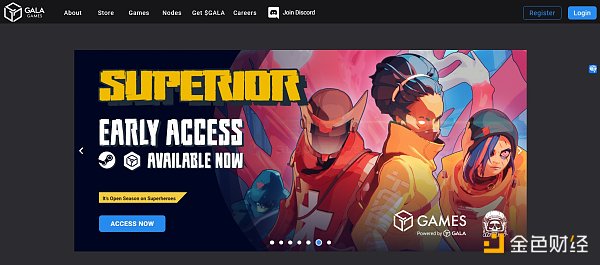
Gala Games: “Steam” of blockchain games
Gala Games is a blockchain game development company founded in 2018 with the aim of building a decentralized game ecosystem and becoming the “Steam” of the blockchain game industry. Unlike the real Steam, Gala Games needs to play two roles: game developer and game aggregation platform. In addition to the games developed by the team itself, other game developers can also launch games on the Gala platform after being approved by the nodes.
Gala Games is developing and operating many different types of games, which give players control over the assets in the game, allowing them to trade the items and props they obtain from the game on the blockchain. Players can not only experience the fun of the game, but also control their own game assets, while earning profits based on their gaming skills in GameFi.
The Gala Games ecosystem consists of five parts: games, game publishing platforms, NFT markets, cloud hosting, and the $GALA token economy. Gala Games runs on a distributed computer network rather than a centralized server controlled by a single entity. These “computers” (called nodes) provide processing power for Gala Games’ decentralized game network in exchange for rewards.
In the decentralized node network of Gala Games, users can use consensus voting to decide which games can be launched on the Gala Games platform, and can also use voting to decide the reward ratio for nodes. For games launched on the Gala Games platform, most of the in-game NFTs will be listed on the Gala NFT store, while a small portion of NFTs will be allocated to founder nodes through a random allocation algorithm.
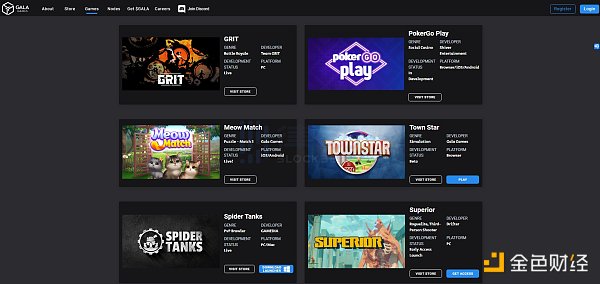
Gala Games has launched 18 games
Currently, Gala Games has launched 18 games. In addition to the popular official self-developed games Town Star, Meow Match, Mirandus, and Last Expedition, there are also games from other studios, such as GRIT, PokerGo Play, Spider Tanks, Superior, Legends Reborn, and more. These games cover various types such as role-playing, shooting, simulation management, card strategy, and tower defense. The platform on which the games run also covers web, PC, mobile, and other platforms, almost covering all popular game types and operating platforms.
Furthermore, in terms of visual effects, the quality of these games has far surpassed that of other chain games of the same period. However, while ensuring game quality, it has also brought some problems. High-quality games (3A or quasi-3A level) have high investment costs and long development cycles. How to adapt the economic model with the development progress in the fast-paced crypto world is a huge challenge. In addition, the overall operation of Gala Games is biased towards centralization, with relatively weak community atmosphere and limited scope of node governance. For ordinary investors, whether it is to obtain information or participate in investment, the entry threshold is quite high.
TreasureDAO: The “Nintendo” of the Crypto World is Ready to Go, “Small but Beautiful” is the Top Priority
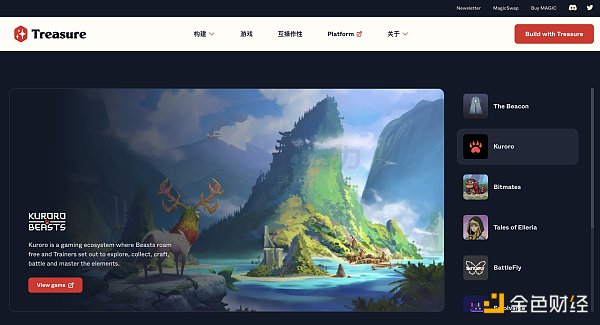
Treasure DAO
Treasure DAO is a game ecosystem built on Arbitrum connected by the MAGIC token, aiming to establish a “decentralized Nintendo.” Each item (Legions NFT, MAGIC token, etc.) in the Treasure ecosystem is distributed for free, and other collections on the Treasure market are also distributed for free and fairly. Treasure was originally built on the Ethereum mainnet, but later migrated to the L2 layer Arbitrum chain due to the high gas cost of the Ethereum network at the time to reduce the user threshold.
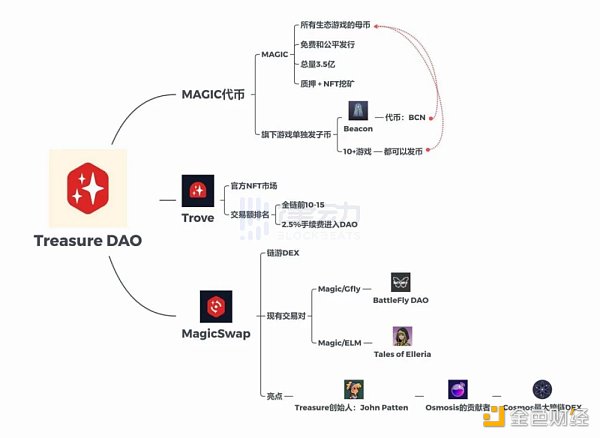
TreasureDAO ecosystem overview (source: PKU Blockchain)
TreasureDAO was launched by the community in November 2021, driven by the community and fair launched, starting from a Loot imitation plate Treasure NFT, and slowly growing into one of the most well-known game ecosystems in the GameFi field through chain games Legions, Life NFT, and Magic starting from an air coin. Looking back at its development history, TreasureDAO’s growth cannot be separated from the support of its internal supporting infrastructure: the universal currency Magic and the three horse-drawn carriages Trove, Bridgeworld, and MagicSwap.
Trove is an NFT market and game launcher on Arbtrium, and can be used for NFT transactions. Bridgeworld is the core economic center of Treasure DAO. As a resource coordination game, it integrates many Defi gameplay around mining, farming, summoning, and exploration to promote the development of Treasure DAO’s economic system. In addition, there is also the AMM protocol MagicSwap, which is committed to becoming the portal of the cross-game economy of the TreasureDAO ecosystem. Currently, Magicswap’s swap and pool only have two trading pairs, Magic/Gfly (the governance token of BattleFly DAO) and Magic/ELM (the governance token of Tales of Elleria).
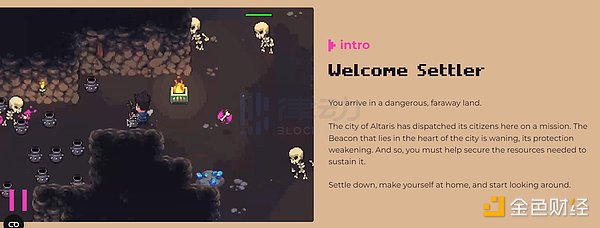
The Beacon
With infrastructure support in place, a hit game is needed to make the ecosystem thrive, and The Beacon is the detonator that ignites the ecosystem. As a phenomenon-level product launched by Treasure DAO, The Beacon’s number of players has reached nearly 26,000+ in just one month since its launch on Arbitrum. The purchase of the game’s Genesis character NFT has reached as high as 65,000 times. The popularity of The Beacon has also driven the rise of Treasure DAO’s data, increasing the weekly active users of Treasure DAO from around 5,000 to about 20,000, directly quadrupling them.
The Beacon is an RPG game where players can pick a basic weapon to explore the dungeon. During the exploration process, players can upgrade their weapons to fight better. The game modes include Home mode, Single-player PVE mode, and Tavern Q&A. The home mode is used to edit houses, single-player PVE mode is used to explore dungeons successfully within a certain time to get rewards, and Tavern Q&A is mainly used to answer NPC questions.
Although The Beacon game itself does not have too many stunning features, it has attracted a lot of attention in the Web3 field. One important reason is that there are few really fun games in the Web3 games. The appearance of The Beacon game has brought some surprises to people. Although it may not be top-notch in Web2 games, it is of good level in Web3 games. This also indicates that Web3 games are still in the early stage and there will be more exploration and development.
TreasureDAO targets the long-tail game market. 3A games are only the standard that a few game factories can achieve. The gradually growing Web3 players have a great demand for small games and AA games, and TreasureDAO is trying to make this “small and beautiful” model work. Starting with hit games and gradually expanding, TreasureDAO establishes a set of infrastructure and ecosystems to meet the needs of independent developers. Each game can benefit from the economic value of MAGIC and shared resources, and the accumulated player activity content can be used to form an economic entity. It will not be affected by the short cycle of a single game, so it has a stronger ecosystem resilience.
Block Ape Scissors: Backed by Binance, the “Great Reshaping” of the BSC Gaming Circle
Previously, the vast majority of GameFi projects were still very single in terms of gameplay compared to traditional 3A games, and many projects were rushed out to catch up with the market. They still played the old routines of DeFi mining, doing the “digging, withdrawing, and selling” business under the guise of a game. In terms of game experience, it is very different from traditional online games and stand-alone games, and in terms of economic models, many project parties treat games as fund plates. This has also led to the dilemma of “death in the light” of chain games. The BSC chain is even more of a disaster area for this “grassroots chain game”. Looking back at history, some well-known GameFi 1.0 projects, such as Farmer’s World, Spaceship, THG, Raca, Valkyrio Valkyrie, and BNB Hero, all ultimately failed to escape the spiral of death.
It is not about nailing these GameFi 1.0 stage projects to the “shame column”. In fact, these low-quality Play-to-earn chain games have an important role in the development of GameFi. But fundamentally, they are similar to grassroots mining and meme coins to some extent, and ultimately only become short-term speculative tools for a few high-risk enthusiasts. At this stage, gamers are no longer satisfied with this. They have higher requirements for the basic quality of games and token economics. Players will pay more attention to whether there is a way to solve the single-game economic mechanism, whether the game is more playable, whether it has social attributes, and so on. Since this is the case, is there a way for players to drive the process themselves, select the chain games they like in all aspects, and participate in the development process? This is what Block Ape Scissors is doing.
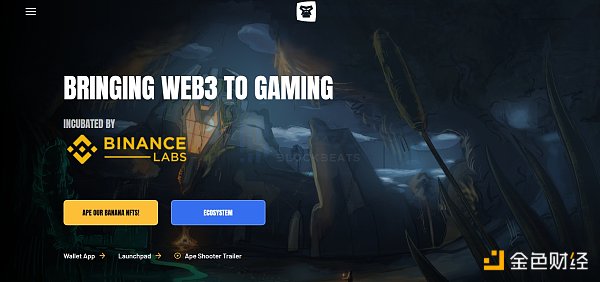
Block Ape Scissors is a game community platform based on the BNB Chain. It was announced on November 15, 2021, incubated by Binance Labs, and its vision is to create lasting value for players through innovative mechanisms and carefully designed game experiences while providing entertainment and committed to building the most diverse and advanced Play to Earn ecosystem. The platform introduces the DAO governance model, breaks the traffic barriers and monopoly of traditional game platforms, provides more opportunities for emerging developers, and provides players with a secure, fair, and fun game environment.
One of the most important aspects is the DAO governance model. Players can obtain token staking rights by purchasing platform equity cards called “Ape Banana Miners”, which use a POS mining mechanism. Block Ape Scissors adopts a sharing economy model that encourages community members to participate in the construction and operation of the platform. Participating in games, contributing content, and participating in governance activities can also earn a certain amount of platform tokens $Banana. Developers can also earn Banana by contributing to games or providing services. This sharing economy model encourages community members to actively participate and promotes a self-sufficient and sustainable ecosystem.
Community members and independent game developers will “act separately”. For independent game developers, at a fixed time each month, they can upload their demo works in the form of proposals. Then Block Ape Scissors DAO will process these proposals, and community members will select the most attractive and playable games through community voting. Block Ape Scissors will then incubate them, help the developers complete the entire game development process, and then be recommended on the homepage of Block Ape Scissors.
During the voting process, all DAO members who participate in the voting can enjoy the profits after the game goes online. For example, if game A is selected by voting and Block Ape Scissors incubates it, when game A brings in 1 million US dollars in profit, Block Ape Scissors can obtain 25% of the profit (to support further platform construction and expansion), the Block Ape Scissors DAO treasury can obtain 15% of the profit (used for the salary of DAO organization contributors and some proposal expenditures), and DAO members can obtain 10% of the profit (according to their corresponding voting rights). The remaining 50% will repurchase and burn $Banana (to accelerate token deflation). (The above data is for example only, and accurate data is subject to official announcement.)
From this, it can be seen that community members and independent game developers have different paths but the same goal. The project party and game players are no longer standing on opposite sides. The entire Block Ape Scissors ecosystem will work together to develop games that are more suitable for the current chain game market. Whether it is pursuing game playability or the closed loop of the economic model, community members will vote to choose the chain games they want, or in other words, interest-driven games that allow the Block Ape Scissors ecosystem to gain more profits.
For a chain game with financial attributes, game fairness and verification of transaction validity are crucial. Block Ape Scissors uses zk-SNARKs to achieve fast and efficient gameplay, allowing for the processing of a large number of transactions in a matter of seconds, while maintaining transaction privacy and verifying its correctness.
Block Ape Scissors is also exploring AI and plans to train an AI robot to generate different economic models. DAO members will vote every week to choose the one they think is better, helping the AI robot continuously optimize and find new solutions for GameFi.
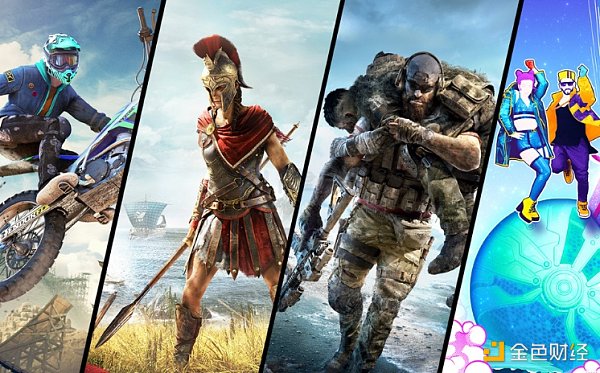
Ubisoft, Lilith, and other Web2 large game companies are also seeking opportunities for change
It is worth mentioning that according to the Block Ape Scissors team, it maintains good relationships with many Web2 large game companies and will gradually transform several popular game IPs in the next six months, using games to bring more traditional players into the crypto world. Web3 games may break the dilemma of traditional game buying volume in the business model (i.e., attracting players through paid advertising, etc.), and subvert the traditional profit distribution structure, providing developers with more monetization opportunities and creating new markets for the gaming industry. The process of transitioning games from Web2 to Web3 may be an opportunity for Block Ape Scissors to overtake others and reshape the BSC chain game circle.
The opportunities and challenges of GameFi in the future
On May 25th, Polygon co-founder Sandeep Nailwal stated that “Web3 games are one of the biggest drivers for the mass adoption of cryptocurrencies. In the next 6-18 months, some top games will be released in Web3. In just last year, the financing funds for Web3 games exceeded 2 billion U.S. dollars.”
The entire history of the game industry has reached a very critical turning point, and the game industry urgently needs to cross the gap from Web2 to Web3 and move towards the era of blockchain games. Given the playability and economic value of games and NFTs, GameFi provides an opportunity to bring the next tens of millions of new users into the cryptocurrency field. Looking back at the development process and development cycle of GameFi, the bull market in this subdivision may already be brewing. We bid farewell to the wild development of GameFi in the first half and wait to see who can achieve a paradigm shift and open up a new round of innovation and growth for the sluggish market.
Like what you're reading? Subscribe to our top stories.
We will continue to update Gambling Chain; if you have any questions or suggestions, please contact us!